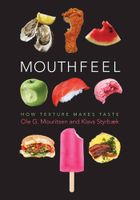Advertisement
From Crisp and Soft to Old and Dry Bread
Appears in
By Ole Mouritsen and Klavs Styrbæk
Published 2017
While the crisp crust of freshly baked bread is almost irresistible, it loses its appeal when it has absorbed moisture and become soft and leathery. The mouthfeel of the former is crunchy and its brown appearance raises expectations of both crispness and release of tasty Maillard compounds that have formed as it baked.
Bread tastes best when it is really fresh with a wonderful crunchy exterior and a pleasantly airy, soft, and spongy interior. It has the very best mouthfeel. When the bread is a few days old, its crust loses crispness and the interior becomes hard. The loaf is dry and stale. But what actually happens is quite the opposite. The environment in which the bread is stored usually has a greater moisture content than the interior of the freshly baked loaf and it absorbs water from its surroundings. When this happens, the starch content crystallizes (or retrogradates) and become hard again, just as they were in the flour from which the bread was baked. This is why it has a dry mouthfeel.

